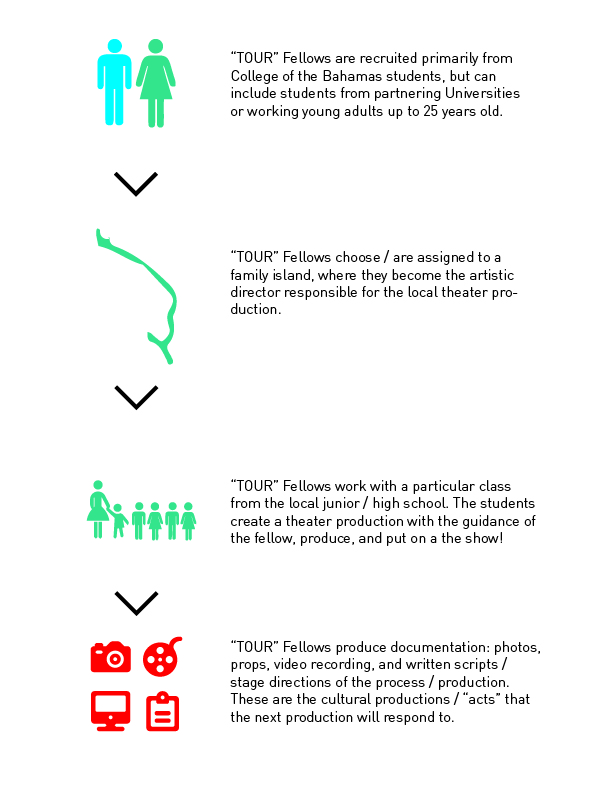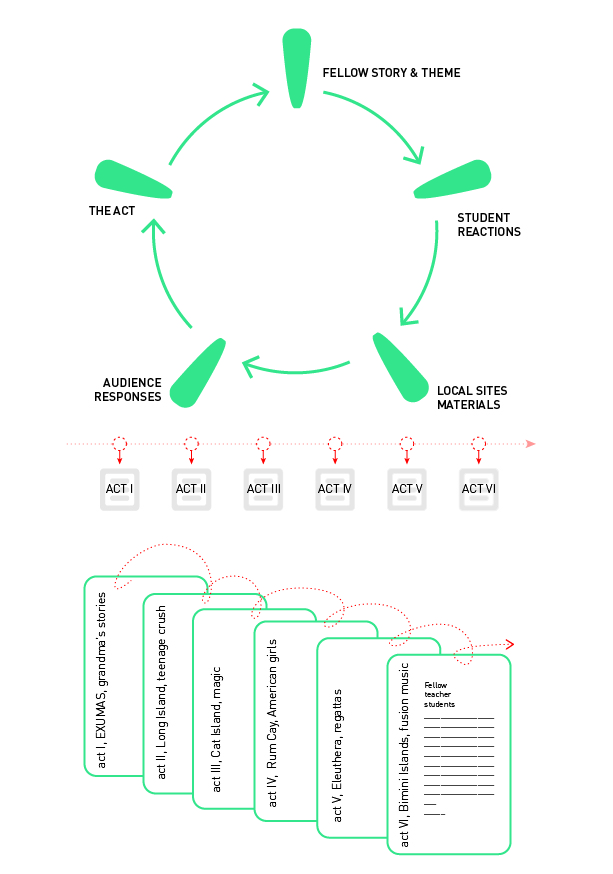TOUR is a design anthropology proposal. Data gathered during fieldwork in the Bahamas was used to inform the design of a social program for college and K-12 students.
As part of a design anthropology class, I conducted a collaborative fieldwork on Long Island, Bahamas, spending most of my time with a family on the island. During the course of the week, my partners and I learned about the family’s structure, Bahamian practices, and their household economy. Two phenomena stood out to us: one, being a tourist economy, Bahamians feel a lack of ownership over Bahamian culture. Imported music, art, and food pervade and cater to the tourists at the expense of traditional music and way of life. Bahamians adapt easily, but they risk losing what makes them uniquely “Bahamian.” Two, there seems to be a cycle where young people from the outer family islands go to the capital, Nassau, to study and work after graduating high school. They return to the family island when they have found partners are want to raise a family.
“Tour” was proposed as program to facilitate the establishment of “Bahamian” identity, capitalizing on the energy and talents of young adults currently establishing their independence in the capital. Put simply, “Tour” is a travelling theater production. College students spend their summer working on one of the family islands, leading a group of K-12 students in the production of a play about Bahamian culture. They are tasked with one goal, to survey local stories and opportunities and put on a performance addressing “culture.” This can be anything from the reenactment of a local folklore on Cat Island or a modern interpretive dance of fishing, regatta, and diving into Dean’s Blue Hole. Script, photographs, and videos of the performance is produced.
After the production, another college and K-12 student group takes the output and responds to it in a different location. How would kids living on Cat Island, for example, respond to a performance based on imported American popular culture in Nassau? These performative responses are in turn taken up by the next company of students, ultimately generating a chain or series of “acts” that speaks to and of what it means to be a Bahamian. In the construction of a “cultural” piece, the kids and the young adult are asked to actively engage with their own identity and to answer the question, “what does it mean to be a Bahamian now?”







